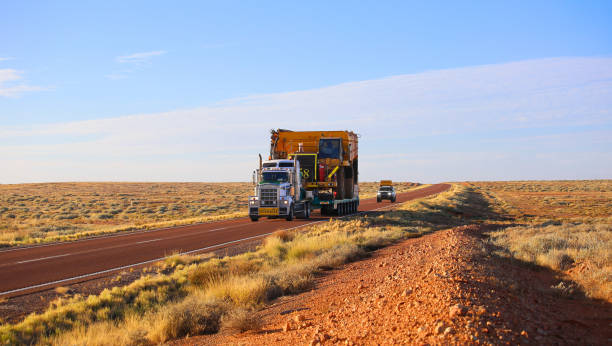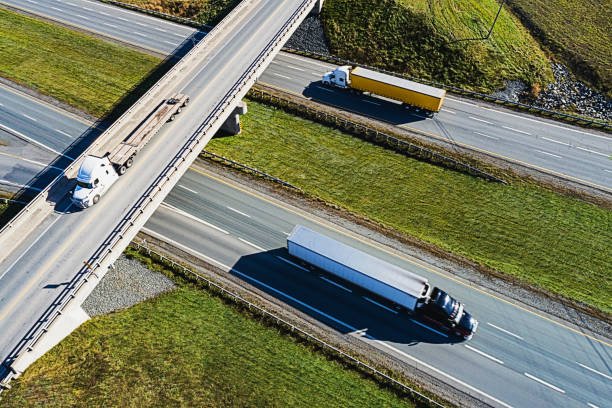Shipping oversized equipment requires careful planning to ensure safety and compliance. Oversized loads, such as heavy machinery or industrial parts, face unique risks during transport. Proper insurance is vital to protect against potential losses. This guide explores freight insurance for oversized equipment, offering a step-by-step approach to securing coverage. By understanding your options, you can safeguard your valuable assets effectively.
Understanding Freight Insurance for Oversized Equipment
Freight insurance provides financial protection for goods during transit. For oversized equipment, this coverage is critical due to the high value and unique handling needs. Unlike standard cargo, oversized items often require specialized vehicles, permits, and routes, increasing risk exposure. Insurance mitigates losses from accidents, theft, or damage. This section explains why freight insurance is essential and how it applies to oversized loads.
What Is Freight Insurance?
Freight insurance covers losses or damages to goods during transportation. It applies to various transport modes, including trucks, ships, or rail. For oversized equipment, policies are tailored to address specific risks, such as equipment failure or road accidents. Policies may cover repair costs, replacement, or financial losses. Understanding policy terms ensures you choose the right coverage for your needs.
Why Oversized Equipment Needs Specialized Coverage
Oversized equipment, like construction machinery or wind turbine parts, is costly and complex to transport. These items often exceed standard vehicle dimensions, requiring permits and escorts. Risks include collisions, equipment damage, or delays due to regulatory issues. Standard insurance may not cover these unique challenges. Specialized freight insurance addresses these gaps, offering comprehensive protection for high-value shipments.

Step-by-Step Guide to Securing Freight Insurance
Securing freight insurance for oversized equipment involves careful steps to ensure full protection. This guide outlines the process, helping you navigate options efficiently. By following these steps, you can avoid common pitfalls and secure a policy that meets your needs. Additionally, working with a reliable partner like a truckpager can streamline the process.
Step 1: Assess Your Equipment’s Value and Risks
Begin by evaluating the equipment’s value and potential risks. Consider factors like replacement cost, transport distance, and route conditions. For example, equipment shipped across states may face weather-related risks or road hazards. Document the equipment’s condition before shipping to support claims. This assessment helps determine the coverage amount needed.
Step 2: Research Insurance Providers
Not all insurers offer policies for oversized equipment. Research providers with experience in freight insurance for heavy loads. Look for those familiar with regulations and logistics for oversized transport. A truckpager service can recommend insurers with a strong track record. Compare policy options, coverage limits, and exclusions to find the best fit.
Step 3: Understand Policy Types and Coverage
Freight insurance policies vary in scope. Common types include all-risk, named perils, and contingent coverage. All-risk policies offer broad protection, covering most damages unless excluded. Named perils cover specific risks, like collisions or theft. Contingent coverage applies if the carrier’s insurance is insufficient. Choose a policy that aligns with your equipment’s needs and transport conditions.
Step 4: Work with a Logistics Partner
A logistics partner, such as a truckpager, simplifies the insurance process. They coordinate permits, routes, and insurance requirements for oversized loads. Their expertise ensures compliance with regulations, reducing risks. They can also connect you with insurers offering tailored policies. This partnership saves time and enhances shipment safety.
Step 5: Review and Finalize the Policy
Before finalizing, review the policy terms carefully. Check for exclusions, such as wear-and-tear or improper handling. Ensure the coverage amount matches the equipment’s value. Verify that the policy covers the entire transport route, including loading and unloading. Once satisfied, finalize the policy and keep documentation accessible for claims.
Key Considerations for Freight Insurance
When securing freight insurance, several factors influence your decision. These considerations ensure your policy aligns with your shipping needs. Understanding them helps avoid coverage gaps and ensures smooth claims processes.
Regulatory Compliance for Oversized Loads
Oversized equipment transport requires strict adherence to regulations. States mandate permits, escorts, and specific routes for oversized loads. Non-compliance can void insurance claims. Ensure your policy accounts for regulatory requirements. A logistics expert can help navigate these rules, ensuring your shipment remains compliant.
Documentation for Claims
Proper documentation is critical for successful claims. Photograph the equipment before and after shipping to record its condition. Keep records of permits, routes, and transport agreements. In case of damage, these documents support your claim. Thorough documentation speeds up the claims process and ensures fair compensation.
Benefits of Comprehensive Coverage
Comprehensive freight insurance offers peace of mind. It covers a wide range of risks, including accidents, theft, and natural disasters. For oversized equipment, this coverage is vital due to high replacement costs. It also protects against delays or regulatory fines. Investing in comprehensive coverage minimizes financial risks during transport.
- Customized Policies: Tailor insurance to your equipment’s specific needs.
- Fast Claims Processing: Choose insurers with efficient claims systems.
- Expert Support: Work with logistics partners for seamless coordination.
Importance of Logistics in Freight Insurance
Logistics play a pivotal role in freight insurance for oversized equipment. Proper planning reduces risks and ensures coverage applicability. This section highlights how logistics impact insurance and why partnering with experts is beneficial.
Role of Logistics in Risk Mitigation
Effective logistics minimize risks during transport. Route planning avoids hazardous roads or low bridges that could damage equipment. Proper loading and securing prevent shifts during transit. Logistics experts, like a truckpager, ensure these measures are in place, supporting insurance coverage by reducing claim likelihood.
Choosing the Right Transport Partner
Selecting a reliable transport partner is crucial. Look for companies experienced in oversized equipment shipping. They should understand insurance requirements and regulatory compliance. A trusted partner ensures your equipment is handled safely, aligning with your insurance policy terms. This reduces the risk of denied claims due to mishandling while ensuring smooth logistics operations from start to finish.

Conclusion
Freight insurance is essential for protecting oversized equipment during shipping. By assessing risks, researching providers, and understanding policy options, you can secure comprehensive coverage. Logistics partners enhance safety and compliance, reducing claim risks. Proper documentation and regulatory adherence further ensure successful claims. Following this guide safeguards your valuable assets, ensuring peace of mind during transport.
FAQs
What is freight insurance for oversized equipment?
Freight insurance for oversized equipment covers losses or damages during transport. It addresses unique risks like accidents or regulatory issues. Policies are tailored to high-value items, ensuring financial protection. Working with logistics experts simplifies the process.
Why is specialized insurance needed for oversized loads?
Oversized loads face higher risks due to their size and value. Standard policies may not cover specific transport challenges. Specialized insurance addresses these gaps, covering accidents, theft, or delays. This ensures comprehensive protection for costly equipment.
How do I choose the right freight insurance provider?
Research providers with experience in oversized equipment shipping. Compare coverage options, limits, and exclusions. Look for insurers recommended by logistics partners. Ensure they understand regulatory and transport requirements for oversized loads.
What documentation is needed for freight insurance claims?
Document the equipment’s condition with photos before and after shipping. Keep records of permits, routes, and transport agreements. These support claims in case of damage. Thorough documentation speeds up the claims process.
How does logistics impact freight insurance?
Logistics ensure safe transport, reducing claim risks. Proper route planning and equipment securing prevent damages. Logistics partners coordinate permits and compliance, aligning with insurance terms. This enhances coverage effectiveness and shipment safety.
Can I customize freight insurance policies?
Yes, policies can be tailored to your equipment’s needs. Options include all-risk or named perils coverage. Discuss requirements with your insurer to ensure adequate protection. Customized policies address specific risks for oversized equipment.
Related Reads
- Calls From Green Bryant & French, LLP?: What You Need to Know
- Seamless Mobile App for eCommerce Beyond Magento Limitations
- Quick Chimney Inspection Ann Arbor Reliable Local Service
- What Is the Cost of Tooth Replacement in Houston?
- Driving Instructors Darwen – Learn to Drive Confidently with Local Experts



